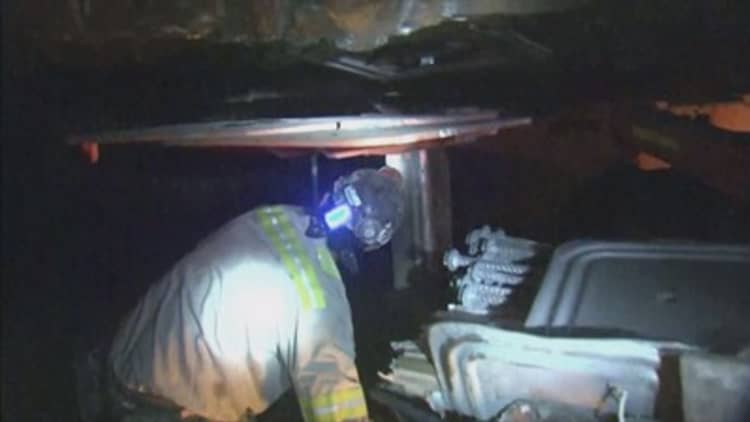
The Trump administration recently pointed to rising coal mining employment as a sign that the president's "America First Energy Plan" is already bearing fruit.
But many of those jobs might not actually exist.
Administration officials are citing preliminary estimates of job gains, not hard numbers, as their proof that coal employment is already growing. But the statisticians who come up with the estimates tell people they should not make that claim.
Here's what Environmental Protection Agency Administrator Scott Pruitt said last week on the ABC news program "This Week": "We've had over 50,000 jobs since last quarter — coal jobs, mining jobs — created in this country. We had almost 7,000 mining and coal jobs created in the month of May alone."
"This president's deregulation agenda, particularly in the energy space, is making a substantial impact on the jobs across this country and giving people hope," he added.
Counting estimated workers
The U.S. Bureau of Labor Statistics did report that the mining sector added an estimated 6,600 jobs in May. However, that estimated change from the prior month was not big enough for the department's statisticians to say with certainty whether the mining sector — which has about 650,000 jobs overall — actually created or lost any jobs.
To make such a conclusion about employment gains or losses, the bureau needed to see a gain or loss of 7,000 jobs in the mining sector in May.
Here's why: The bureau can't count every American worker every month, so it surveys a pool of businesses. It then estimates how much employment rose or fell for the whole sector based on labor changes among the companies it surveyed. When the estimated change is too small, the bureau concludes that employment was "roughly unchanged" in the sector, a bureau spokesperson told CNBC.
In other words, the estimated change in mining jobs in May was so small relative to the overall size of the sector that it's not safe to say whether more boots actually hit the ground.
But that's exactly what Pruitt is doing: concluding that the country hired nearly 7,000 mining workers in May.
"Our data comes from the Bureau of Labor Statistics, and we can all agree that thanks to President Trump's policies we are creating jobs and making America great again," EPA spokesman Jahan Wilcox said in an email to CNBC.
Not all coal jobs
Pruitt's claim is misleading in another way. By referring specifically to coal, he may have left some viewers with the impression that coal mining jobs rose by nearly 7,000 positions last month.
But the estimated rise in coal mining jobs was just 400, the Bureau of Labor Statistics reported. That estimate was also too small for the bureau to say whether employment really rose. It needed to see a change of at least 700 positions to make that call.
To get to the 6,600 figure, you have to look more broadly at the mining sector, which includes coal mining, oil and gas extraction, metal ore mining and support activities for mining.
Support activities actually drove estimated mining job gains higher, adding an estimated 7,900 positions in May. Statisticians needed to see a 5,500 increase to make a call, so they can be relatively sure that there was some pickup in hiring.
The bureau told CNBC that 74 percent of these support jobs were added in the oil and gas sector in May. That makes sense because U.S. crude oil production has been surging thanks to higher oil prices, with workers packing into Texas' Permian Basin in particular.
"While some of the employment in support activities could be related to coal mining, we can't say what share that represents," said Marcy Jacobs, a bureau economist.
Pruitt also erred in saying the country has added 50,000 mining workers since last quarter, when Trump took office. The estimated change of 46,700 occurred between October and May, according to Bureau of Labor Statistics data.
70 coal mining jobs, but not in energy
President Donald Trump has also sought to link his energy policy to coal job gains. When he announced he would pull the United States out of the Paris climate agreement, he said the international accord would prevent the country from building coal power plants. He added that coal mines are already opening up under his watch.
"We're having a big opening in two weeks," he said, adding, "A big opening of a brand-new mine. It's unheard of. For many, many years, that hasn't happened."

The coal mine he was referring to will employ 70 people and produce metallurgical coal, which is used to make steel, not generate power. The owner, Corsa Coal, decided to open the mine last year after the steel industry recovered and coal supplies from China and Australia fell.
It is entirely possible that Trump's policies could help create more coal jobs — though many analysts say that's unlikely because the coal industry is in a structural downturn. But the administration is essentially jumping the gun, using preliminary data that it appears to misunderstand or is possibly misrepresenting to say its policies are already creating jobs.


